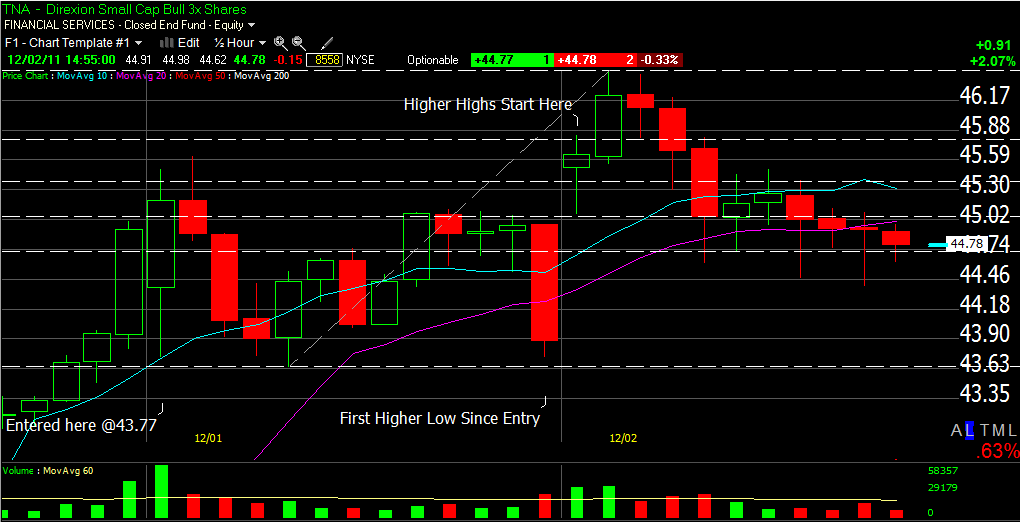
Originally Posted by
Billy

Pierre,
There are no position-sizing rules from the robot. All position-sizing and leverage decisions are your own responsibility.
I previously gave an example of my own discretionary guidelines in the current conditions.
First, I always enter a full TNA position at the initial limit, say 1,000 shares at 43.77 yesterday. I place my initial stop for 666 shares just under the first support cluster and for 334 shares at the robot’s stop.
Once I see a higher low from my entry followed by higher highs, I exit 333 shares at a 39% retracement and 333 shares at a 51% retracement. The remaining 334 shares are managed exactly like a robot position.
The proceeds of the 666 shares should only be reinvested at a robot’s entry limit if there are buy settings and the same stops and retracements guidelines apply from there.
Today, 1/3 of my TNA (entered at 43.77) was stopped out at 45.29 and 1/3 at 44.99. I am still long 1/3 position but wont scale back-in my 2/3 position before a new active buy limit price.
Billy






 Reply With Quote
Reply With Quote